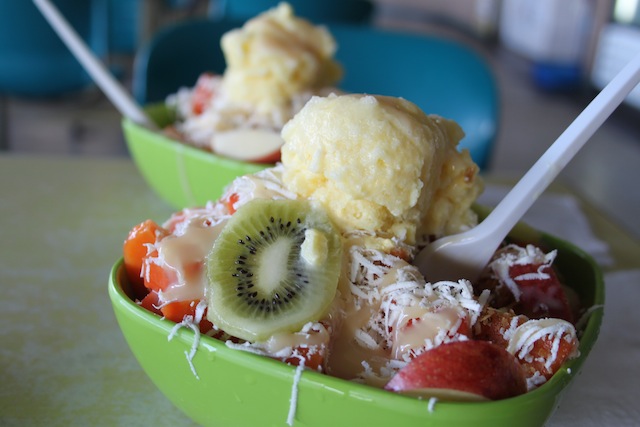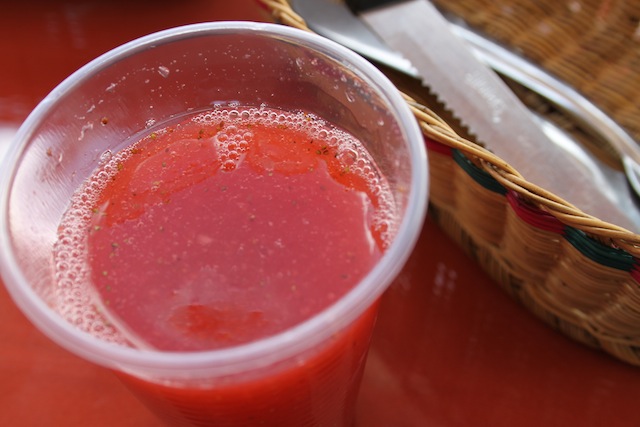Learning to Speak Spanish Part II – Besar
February 25, 2013

I don’t think I need to explain why I learned my second Spanish verb. First, you want, and want is sweet, but a kiss – a kiss is even sweeter.
There were plenty of other sweets in Colombia. Small rest stops lined the road from Bogotá to San Gil; sometimes these were open-air stores, sometimes just a flapping tarp above a long wooden table covered with piles of candies, pastries, and fruits. There were wafers sandwiching white, nutty nougat and small plastic cups of arequipe, a creamy caramel just begging to be spooned into your mouth. There were bins full of milky ice cream bars. There were garish pink- and yellow-stained sticks made of pure sugar to celebrate the New Year. On the beach, women and men wandered up and down past the open tents hawking cocadas from the stack piled high atop their heads. They were sinfully good – thick shavings of freshly-grated coconut slathered with caramel.


But perhaps even better than all the sweets were the fruits. In Colombia, you could try a different fruit every day and never run out of days. Besides your array of typical tropical delights, Colombia is home to a number of fruits that aren’t found anywhere else. There’s zapote, borojó, curuba, mamoncillo, annona, and chontaduro as well as passion fruit, guava, mango, apple, pear, blackberry, strawberry and more than six types of banana. There’s the pitalla, a little yellow grenade with creamy white insides and peppery black seeds – which apparently explodes your intestines when you eat too many of them. Or the uchuva, known in English as physalis – plump, firm, and thin-skinned and wrapped in papery, veined leaves.


But my favorite by far was guanábana (soursop in English), if only because each time I saw the giant fruit with its green prickled skin, I could follow up with a modified rendition of the Muppet song. Doo-doo-doo-doo-doo. Guanábana. Doo-doo-doo-doo. Which is even more annoying than the original, if you can imagine. Guanábana juice is fruit pulp mixed with milk into a frothy-fruity milkshake, if you can imagine that either.
Or else my favorite was lulo, a tight, yellowish-orange fruit with a slightly citrusy twang, a blend between rhubarb and lime, filled with pearlescent green seeds.
Or what the hell, just eat them all together. Fruit salad in Colombia means two scoops of ice cream topped with mango, papaya, pineapple, guava, kiwi, apple, toasted coconut, caramel arequipe syrup, and hair-fine shavings of queso blanco.
Give me. Give me. Give me.
A kiss. In Spanish, besar is often reflexive. Me besas, te beso. As if the verb itself can’t help but be intertwined with another person. My lips with yours. My words with yours. A bit like the oblea wafers sandwiching a thin layer of sweet arequipe, a crunch interlaced with cream, sweetness tempered by wafer. Or the way Aguardiente, Colombia’s national liquor, slides down the back of your throat with a slow, anise-tinged burn.

A kiss always involves you. It involves you, of course, in the physical sense – spatially you are there. But a kiss, no matter whether it is a brief, alcohol-induced mistake, or a long, love-filled affair, connects you to another person. It involves you in the sense that it intertwines your life with someone else’s. From a first kiss, how can you know that soon, you’ll be living tangled up in someone else, taking on another country as your own.
I’ll take another juice. I could get used to this.

This blog is exceptional! I can’t wait for part III